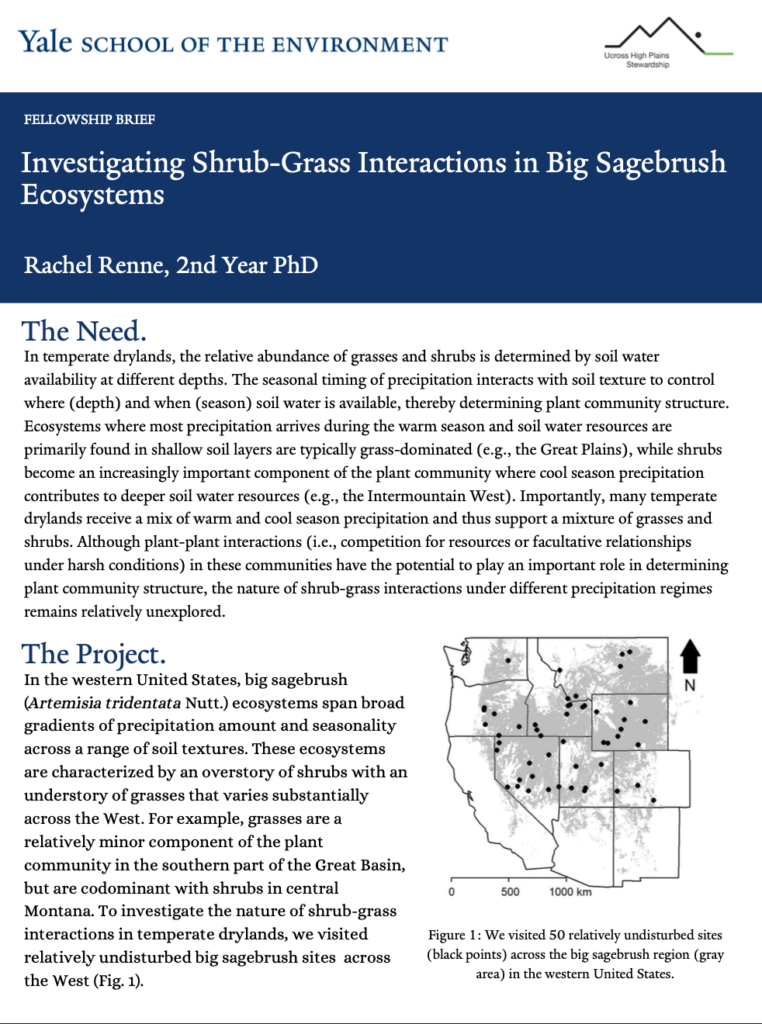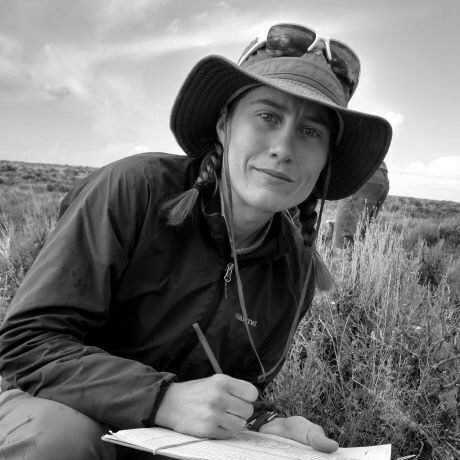In temperate drylands, the amount and timing of precipitation interacts with soil texture to determine patterns of seasonal soil water availability at different soil depths. The coexistence of grasses and woody plants in these ecosystems has been attributed to partitioning of soil water resources, with grasses relying on resources in shallow soils, while woody plants rely on those in deeper soils. Yet, in ecosystems where grasses and woody plants coexist—such as big sagebrush (Artemisia tridentata Nutt.) ecosystems in western North America—the consequences of soil water resource partitioning on competition remains unresolved. Rachel is visiting relatively undisturbed big sagebrush sites across the West that span gradients of precipitation amount and seasonality to investigate how climate and soils influence the balance and competitive interactions between shrubs and grasses. By exploring the underlying relationships between environmental conditions (climate and soils) and plant functional type dominance and interactions, this project will provide insight into how (and where) management goals—such as high-quality wildlife habitat, optimal forage for livestock, or preservation of climate resilient ecosystems—might be achieved under different environmental conditions.
COLLABORATOR
PROJECT DELIVERABLE
FELLOWSHIP BRIEF

STUDENT RESEARCHER

Rachel Renne, Western Resource Fellow | Rachel grew up in rural southwest Florida, in the heart of orange and cattle-country. After graduating from New College of Florida in 2008, she began a three-mile-per-hour tour—on foot—of the subtle and dramatic shifts of vegetation across the American landscape, hiking over 11,000 miles on National Scenic (and other) Trails. Rachel completed a Masters of Environmental Science at the Yale School of Forestry and Environmental Studies in 2018 and is now a doctoral student at the Yale School of the Environment. She is fascinated by how soils translate climate into vegetation in drylands, and her favorite drylands are big sagebrush ecosystems. She is interested in combining traditional field data with artificial intelligence to answer fundamental and applied questions about plant community ecology. See what Rachel has been up to. | Blog
